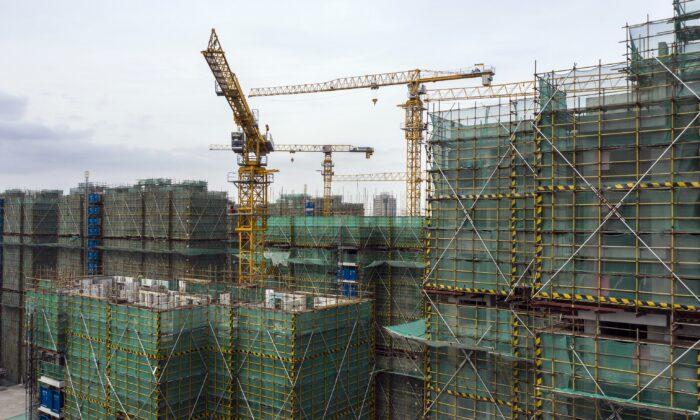Western media commentary has enthused about Beijing’s new answer to the nation’s ongoing property crisis. What the authorities have recently proposed admittedly goes well beyond anything tried thus far and certainly offers more than the inaction Beijing showed for two years after the crisis first broke with the failure of huge developer Evergrande in 2021.
However, if recent action dwarfs what has come before, it is nonetheless too small for the nation’s needs and, what is more, introduces new risks into China’s real estate equation. Beijing is far from the end of its economic troubles.
This latest answer has Beijing issue some 1 trillion yuan (about $140 billion) of ultra-long-dated bonds to finance local government purchases of unoccupied apartments across the country. According to the plan, these government owners will then repurpose the apartments as affordable housing for low- and middle-income families. To encourage such buying, the plan will reduce the required minimum down payment percentages and also reduce minimum interest rates for personal financing.
The effort far exceeds the piddling measures Beijing took last year and, certainly, the total inaction that preceded them. The authorities claim that this new plan will clear away the overhang of unsold properties, relieve the downward pressure of real estate prices, restore interest in homebuying among Chinese families, and also raise consumer confidence and levels of spending.
There is much room for skepticism. Size, for instance, is important. As impressive as Beijing’s effort looks on the surface, it pales next to the scope of China’s problem. There are an estimated 7 million unoccupied units in China today, and that does not count those pre-purchased but languishing in incomplete projects. By some estimates, the total amounts to 20–30 million of unfinished and unoccupied units. Next to this reality, the program’s start with some 300 billion yuan (about $41 billion) seems small indeed.
Even if all the 1 trillion yuan allocated were to enter markets tomorrow, it would still fall far short of the billions more needed to make a dent in this supply overhang. Perhaps the authorities are waiting to see the effect of this initial foray into markets and plan to add to the effort if it goes well. Such a plan would offer encouragement, to be sure, but at the moment, it is clear that Beijing has to do a lot more to have an impact.
Another more fundamental question attaches to this program. Because it plans to sell these apartments on favorable terms to low- and middle-income buyers, it opens questions about the creditworthiness of these buyers and, hence, of future financial trouble. If the only way people can buy is by reducing financing requirements and costs, the implication is that these buyers will continue to need help supporting their purchases. Yet nothing in the program indicates a willingness to provide them such help. There is then a significant chance that the future will see a string of financial failures from these buyers that will only replace the failures from developers that presently weigh on Chinese financial markets and the economy and that this buying program promises to remedy.
Perhaps a still more fundamental question centers on questions of the overall housing supply. The program seems to have no plans for the properties that these low- and middle-income families vacate when they buy into these new units just purchased and refitted by local governments. There is no talk of demolishing these vacated units. It is entirely possible, then, that the huge effort to occupy now vacant new housing units will only lead to a surplus of newly vacated older units that presumably are still serviceable.
Nor is it apparent that the program, even if it is wildly successful, will, as Beijing hopes, get households to open their wallets and consume at a significantly more robust pace than they are now. After all, real estate fears are only one of the factors holding Chinese consumers back. The years of trouble in real estate have depressed the price of existing homes sufficiently to put a significant hole in household net worth. As of April, the most recent period for which data are available, housing prices were still accelerating downward, falling at over a 3 percent annual rate in April. Even the best programs would take quite a while to turn this situation around. In the face of such a reality, Chinese households will remain more interested in saving than spending for quite a while to come.
There is also the legacy of the zero-COVID measures imposed by Beijing until early 2023. The stop-start nature of economics imposed by the quarantines and lockdowns undermined Chinese workers’ confidence that they can bring home a regular income. That feeling and its dampening effect on spending will only fade gradually. In April, retail sales, though up 2.3 percent from year-ago levels, were decelerating and hardly moving as Beijing wants.
This latest effort by Beijing, however inadequate, is welcome indeed, after 2023’s piddling efforts and the inaction of 2021 and 2022. However, it is far from being a “solution” to Beijing’s economic and financial troubles. If China is ever to return to the prosperity that the Communist Party has promised the Chinese people, Beijing will have to do a lot more than this and certainly more than it has done so far.







